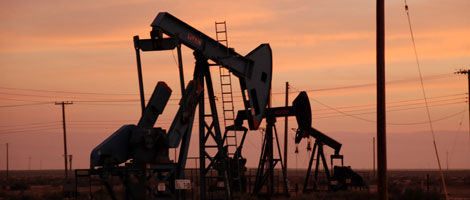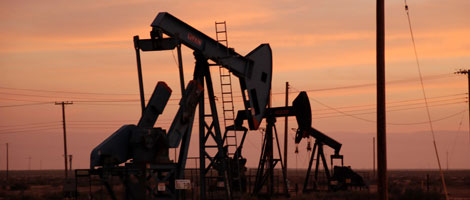COP

April 12, 2022 | COP, Daily JAM, EQNR, Jubak Picks, PXD, Volatility, XLE |
As of noon New York time today, April 12, the Standard & Poor’s 500 was up 0.47% and the Dow Jones Industrial Average had gained 0.34%. The NASDAQ Composite was higher by 0.73% and the NASDAQ 100 had moved up by 0.67%. The small cap Russell 2000 had tacked on 1.49%. And then by the close stocks had given up all these gains and more. For the day, the S&P 500 closed down 0.34% and the Dow was off 0.26%. The NASDAQ Composite ended lower by 0.30% and the NASDAQ 100 was down 0.36%. The small cap Russell 2000 managed to close up 0.33% on the day.

March 28, 2022 | COP, Daily JAM, EQNR, Jubak Picks, LNG, Videos, Volatility |
Don’t sell those oil stocks yet! Back at the beginning of the year, I anticipated that coming conflict between Russia and the Ukraine would drive up the price of oil, and the stocks I added to my portfoliohene stocks (COP, EQNR, LNG) have all been up big. But, I don’t think it’s time to sell yet. Why? Summer. Summer is the big driving season in the Northern Hemisphere, and right now (in what’s called the “shoulder season”) reserves of gasoline are supposed to be replenished in anticipation of summer. But that’s not happening due to Russia-Ukraine, and I think with summer we will see prices for oil spike even higher. That’s why I wouldn’t sell these stocks yet. (And that’s despite of the selling today, March 28, on more lockdowns in China)

March 25, 2022 | COP, Daily JAM, EQNR, Jubak Picks, LNG, Morning Briefing, Volatility |
The United States and Europe have reached an agreement to expand U.S. supplies of natural gas to Europe in an effort to reduce Europe’s dependence on Russian natural gas.
Details are bit vague. And wishful thinking is a big ingredient. The basis problem is that Russia supplies Europe with 150 billion cubic meters of natural gas every year via pipelines. U.S. and other sources can’t match increase production to that level and the infrastructure to get the gas to Europe simply doesn’t exist. Yet the goal has now been put on paper and the agreement promises that Europe will get at least 15 billion cubic meters of additional LNG supplies by the end of the year. Even though it is not clear where the natural gas welcome from or how ti will be delivered.

March 23, 2022 | COP, Daily JAM, EQNR, Jubak Picks, LNG, PXD, Volatility |
Oil rallied again today with U.S. benchmark West Texas Intermediate up 4.79% on the day to $114.79 a barrel and international benchmark Brent up 5.12% to $121.39 a barrel. So, natural, oil and gas equities stocks are up today. And the broader market is down. What else isn’t new?

March 8, 2022 | ALB, CHPT, COP, Daily JAM, DNNGY, EVGO, Morning Briefing, PXD |
The United States will ban imports of oil and natural gas from Russia, President Biden announced Tuesday. U.S. allies in Europe also announced action on the energy front with a plan to cut natural gas imports from Russia by two-thirds in 2022. Even though the White House has said that the long-lead time on the ban would give importers and consumers time to find other sources by the end of 2022, oil futures soared today with the price of West Texas Intermediate, the U.S. crude benchmark, climbing to $126.98 a barrel, up 6.35%, for April delivery as of 12:30 p.m. in New York. International benchmark Brent creek rose 6.52%to $131.24 a barrel for April delivery.

March 7, 2022 | COP, Daily JAM, EQNR, Jubak Picks, LNG, Morning Briefing, PXD, Top 50 Stocks |
I suppose there is something else that could add to the supply of bad news today on oil supply, but we’ve already got a full dance card At 2 P.m. in New York U.S. crude benchmark West Texas Intermediate traded up 5.07% to $121.55 a barrel; international benchmark Brent crude was up 6.24% to $125.48 a barrel. Where to start?

February 27, 2022 | COP, Daily JAM, DAL, EQNR, Jubak Picks, LNG, PXD, Volatility |
On Saturday the European Union nations that control SWIFT, the dominant global network connecting banks, announced that they would expel some specific Russian banks from the network. The U.S., Canada, and the United Kingdom agreed with the move. The U.S. and its European allies left open the question of sanctions directly on Russia’s central bank.
The move to deny access to SWIFT means that the named Russian banks, and I’m not naming them because I haven’t been able to find a list, won’t be able to pay other banks or receive funds from other banks. They will not be able to transact business with international banks over the SWIFT network for their client businesses. I’d expect that out of an abundance of understandable caution, many Western banks will refuse to do business with Russian banks at all.

February 11, 2022 | COP, Daily JAM, EQNR, Jubak Picks, LNG, Morning Briefing, PXD, Volatility |
International benchmark Brent crude jumped as much as 4.7% to $95 a barrel for the first time since 2014. Brent was up 23.68% and trading at $94.77 at 3 p.m. New York time Friday. U.S. benchmark West Texas Intermediate, which normally trades below Brent in price, was up 4% to $93.50 a barrel at 3 p.m. in New York.

February 3, 2022 | COP, Daily JAM, EQNR, Jubak Picks, LNG, PXD, Volatility, XLE |
U.S. crude benchmark West Texas Intermediate rose above $90 a barrel–it closed at $90.87, up 0.60% for the day, for the first time since 2014. International benchmark Brent crude gained 0.42% to close at $91.53 a barrel. Of course, it took a wild confluence of events to push prices above $90.

February 1, 2022 | COP, Daily JAM, EQNR, Jubak Picks, LNG, PXD, Stock Alerts, Volatility |
OPEC+ meets tomorrow and the oil cartel and friends like Russia is expected to approve an increase in production that will reduce last year’s cuts in production. But the odds are that the decision won’t matter.

January 21, 2022 | COP, Daily JAM, EQNR, Jubak Picks, LNG, PXD, Short Term, Volatility |
On Saturday, January 15, in my “Saturday Night Quarterback” post wrote that conflict (a more comprehensive term than “war) between Russia and Ukraine remained a low probability event–but that the probability wasn’t zero and the the odds of conflict had increased in the past month. What’s happened since then? The odds of conflict have climbed










